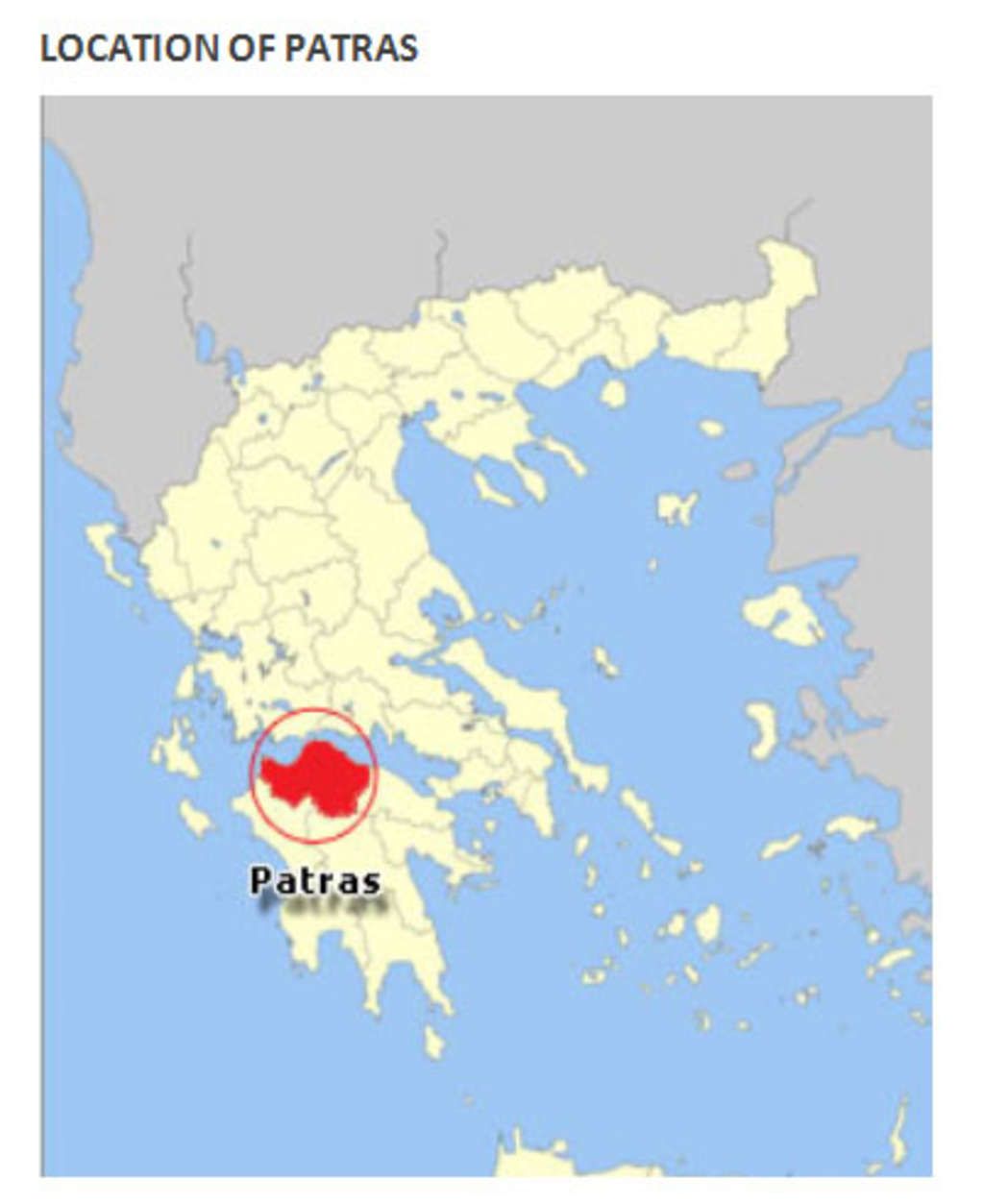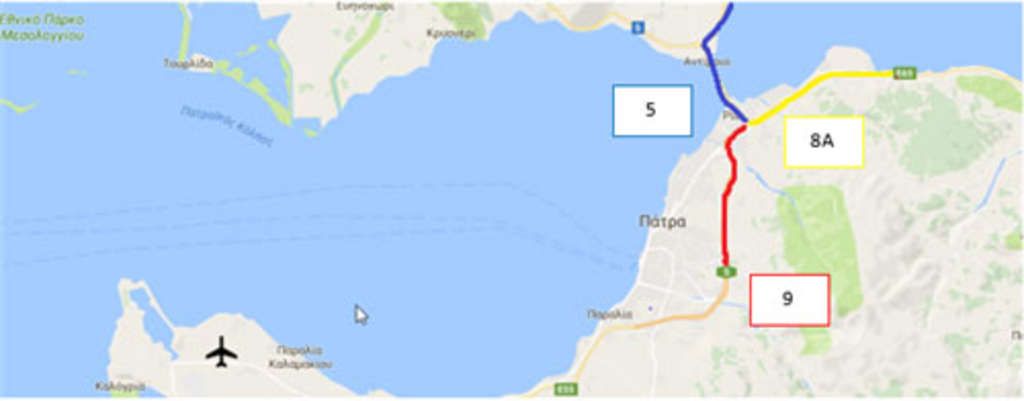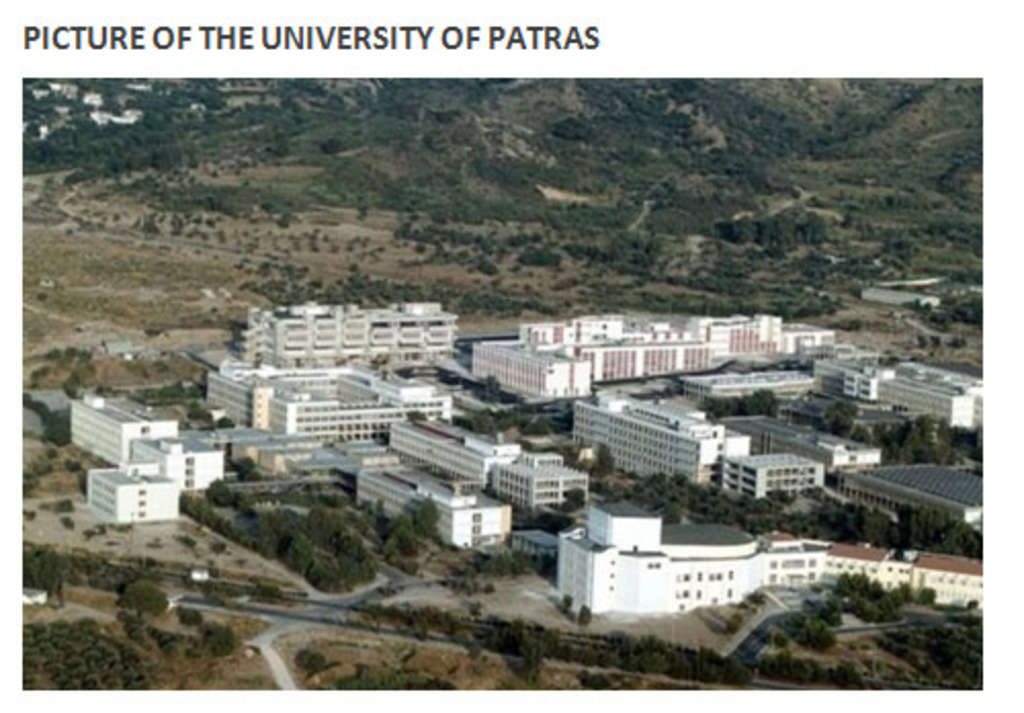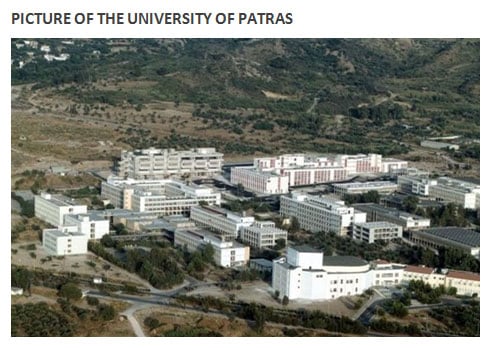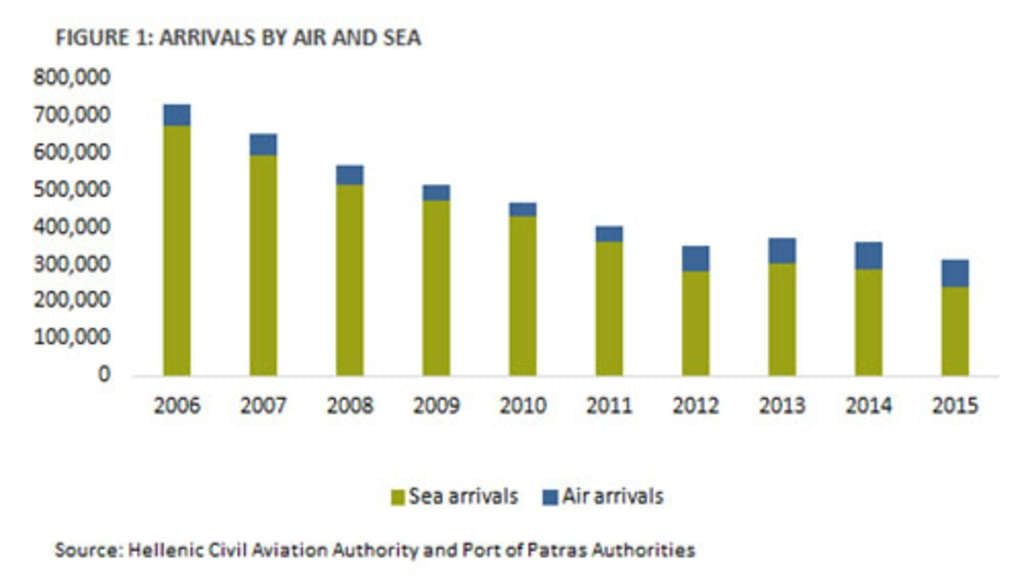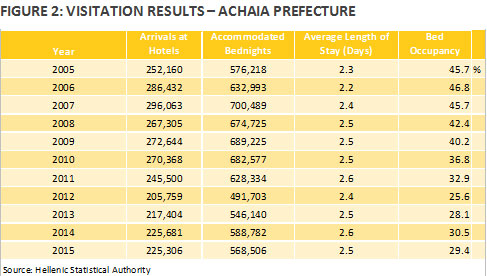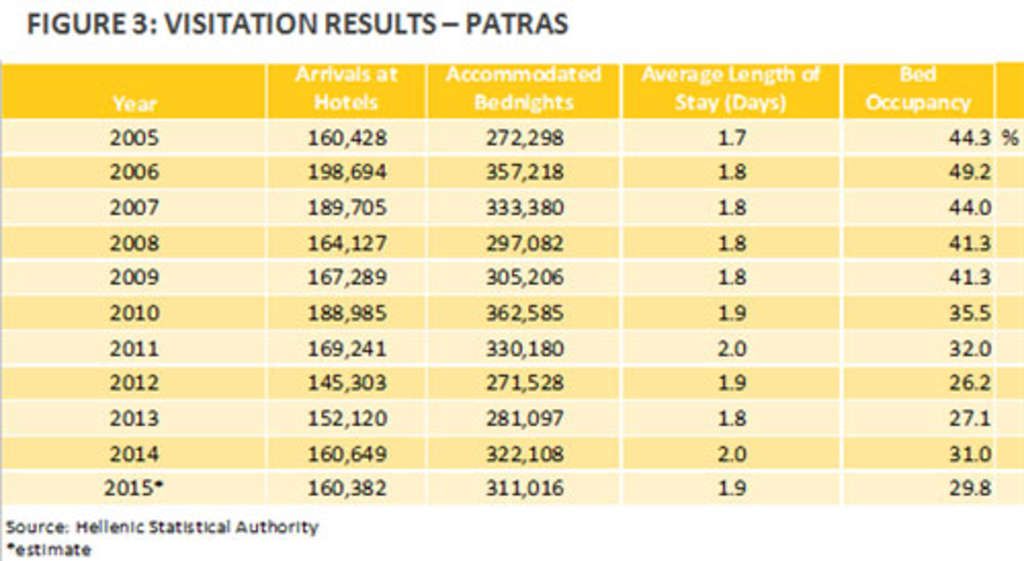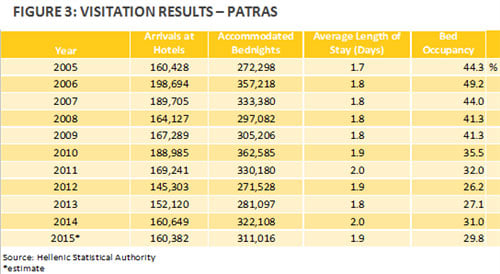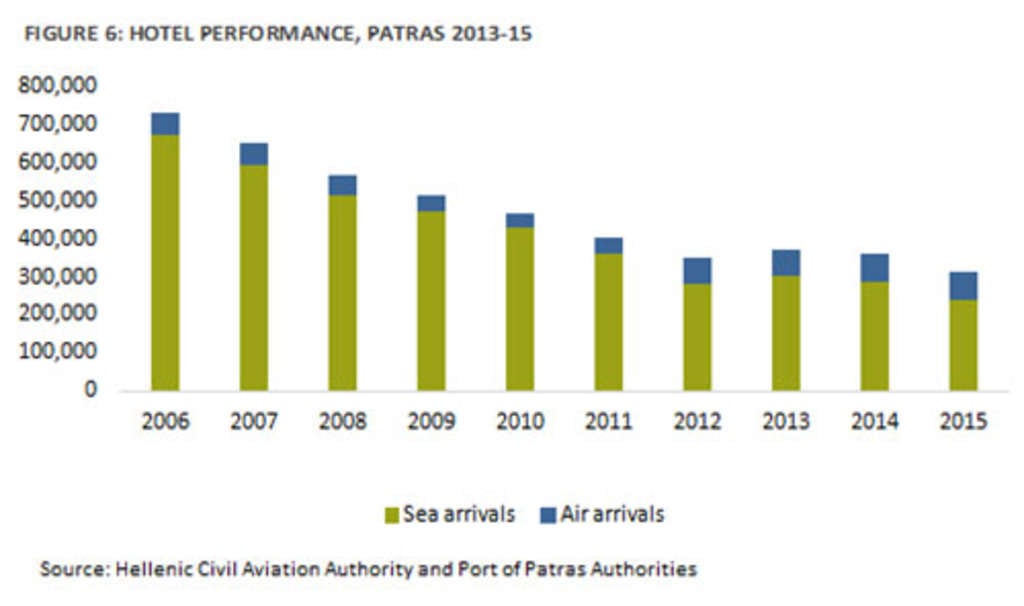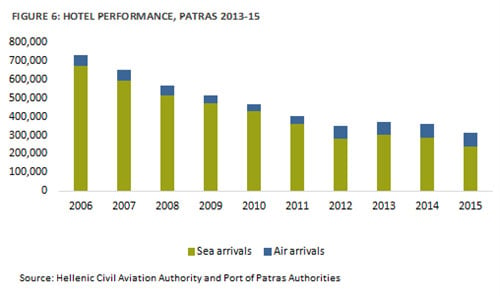In Focus: Patras, Greece
Introduction
Patras is the regional capital of Western Greece and the country's third largest city. It is located 215 kilometers west of Athens, within Achaia Prefecture, while the port of the city serves as the main gateway to Greece from Western Europe. Τhe urban complex of the city is the third most populous in Greece after the ones of Athens and Thessaloniki and it constitutes one of the largest financial, commercial, and cultural center of the Peloponnese Peninsula and Western Greece. The city hosts the University of Patras which is one of the country's most prominent public universities and the University Regional General Hospital which is affiliated with the University of Patras and has earned a reputation as a well-respected medical center.
The rich historical and cultural heritage of Patras and its lively modern pace of life transfuse a distinct character to the city. The Patras Carnival, the National Festival that the city hosts every summer, and the Municipal Theater are remarkable examples of Patras' artistic tradition while the local cultural scene stands out in theatres, in plastic arts, and in literature. This is why the city of Patras was elected as the European Capital of Culture in 2006.
Tourism
Accessibility
Patras is the hub of three major national roads. To the east there is National Road 8A which connects the city to Athens, Corinth, and other cities of northern Peloponnese. To the north there is the Rio-Antirio Bridge and National Highway 5 which connects the city to mainland Greece and Epirus. To the south, there is National Route 9 which connects the city to Kalamata and other places in western Peloponnese. The roads' condition, especially that of National Road 8A, was for years very poor but is gradually upgraded to motorway A8 which will be part of the new Olympia Odos network. The completion date of the A8 motorway is scheduled for late 2017. It is believed that once the project is ready, the city of Patras will become a much more attractive destination, especially for leisure travelers.
The city also features a train station which is currently less active as the railway axis Athens - Patras has been modernized only up to the town of Kiato; the new axis is planned to reach Patras by 2022 as it is comprised of three different parts all still requiring various development stages of auction, design, and implementation.
The broader region of Achaia is connected to other European destinations via the Araxos airport located about 45 kilometers southwest of Patras. It takes approximately 30 minutes to access the Araxos Airport using road E55.
Patras' port is often called the 'Gate of Greece to the West'. Its position as the nearest major continental port to Western Europe encourages its use by tourists, either as an entry - exit point or as a transit point. The port, the railway line, and the station which occupy a very large coastline area - combined with the existence of industrial activity in the southwest coast - make Patras a "seaside city without the sea". Today, the port is considered to be the largest shipping terminal in Western Greece and provides one of the most important ferry connections to Italy. However, its role within the network of internal ferry connections to the islands of the Ionian Sea has weakened after Kyllini's port development, which became the new main connection point of Zakynthos and Kefalonia.
City Attractions
The busiest areas in the region of Achaia are the city of Patras, its coastal towns (Lakopetra, Egio, etc.), and the mountainous area around Kalavryta featuring a ski resort. The city of Patras is rather popular, especially with the domestic segment of the tourism market. The main tourist attractions of the city are:
- The Castle of Patras built around the mid-6th century above the ruins of the ancient acropolis.
- The Tower of Achaia Clauss, one of the first Greek wineries built in accordance to the standards established in the wineries across Europe that were thriving at the time. Achaia Clauss was founded in 1861 as a result of the vision of Gustav Clauss, a representative of the Bavarian company Fels and Co.
- The Roman Odeon, one of the most important relics from the Roman Period, discovered in 1889 while some workers were digging up the ground for the construction of the port.
- The Church of St. Andreas, a Greek Orthodox church built in 1908, dedicated to the first-called Apostle of Christ, Saint-Andrew. It is the largest church in Greece and the third largest Byzantine-style church in the Balkans. Relics of the Apostle Saint Andrew are stored in the church making it a famous place of pilgrimage for Christians from all over the world.
- The "Apollo" Municipal Theatre
is a theater built in 1972 by the German architect Ernst Ziller. It is considered to be an architectural masterpiece and regarded as one of the three neoclassical theaters that still survive in Greece. In fact, the theater of Patras is a replica of the famous La Scala di Milano. - The Rio–Antirio suspension bridge, an engineering achievement that links the city to western continental Greece.
Apart from the above-mentioned attractions, Patras is also famous for its Carnival, the biggest in Greece with a history of 180 years. It is held annualy in March and attracts visitors from all over the country who come to participate in one of the carnival's various events or watch the famous parade that takes place the Sunday before Ash Monday. The clean waters of the beaches of Rio constitute another reason why travellers choose to visit Patras as they are located in close distance to the city, while prices of local restaurants and lodging facilites are quite affordable compared to other seaside places.
Trading Activity
Apart from those points of interest attracting mainly leisure travelers, a special mention should be made to the economic and commercial activity of the city. Indeed, a very large volume of Patras tourist visitation consists of business travelers.
The city has strongly expanded its trading activity with shops and businesses covering a wide range of industries. Many national and multinational companies have branches or agencies in Patras. In addition, many businesses within the existing industries are operating under franchise agreements. Finally, the city hosts a fairly active industrial zone of about 100 established businesses (4,000 employees) and some of the most important industrial companies in the wider region of Achaia are the following: Athinaiki Zithopoiia (liquor company), Loux (soft drinks industry), Kepenos (flour mills), Maniatopoulos (bicycle manufacturer), Friesland (dairy industry), Duros(clothing manufacturer), Elpack (carton and cartonbox trade), Kontothodoros (trade and packing of fertilizers),Pettas Pavlos (Oils and Fats - Soap Manufacturers - Biofuels - Green energy production).
Education and Sports Facilities
The city hosts two universities (the University of Patras and the Hellenic Open University) and the Technological Educational Institute of Western Greece. The operation of their research institutes makes the city a scientific center with strong background in technical education. There are more than 50,000undergraduate and graduate students in the city making it a popular destination among young people. The main sports facilities include the Panpeloponnesian Stadium which was built in 1981 and fully reconstructed to host the football matches of the 2004 Summer Olympics, the Football Stadium of Panachaiki Union which is a multi-sport club based on the city of Patras, and the indoor Basketball Stadium of Apollon Patras Team which was built in 1992 and has a capacity of 3,500 people. The city also hosts the Centre of Technical Education of the Greek Army as well as five hospitals (one university, one military, and three public).
Demand for Transient Accommodation
Arrivals by Air and Se a
Traditionally, the port of Patras has been welcoming more guests than the airport of Araxos. This is mainly attibuted to the size of the airport which is relatively small and to the lack of daily flights to and from other European cities. Nonetheless, the number of airport passengers during the last nine years has been steadily increasing at a compound annual growth rate of 3.1%, as an increasing number of international tourists choose to visit the area's resorts. On the other hand, passenger movements to and from the port of Patras experienced volatile fluctuations characterized by a decreasing trend due to the decline in scheduled ferry routes between Italian harbors and Patras, after the port of Igoumenitsa was introduced as an alternative choice for ferry connections between Italy and Greece. Besides, over the years a diminishing number of tourists choose to travel by sea since it is considered an outdated way of transportation whereas the beginning of the finacial crisis shrunk considerably the domestic income of the potential sea travelers who mainly came from Italy.
Basic Visitation Factors
For the past 11 years, the average length of stay in the region of Achaia was about 2.5 days. The average bed occupany rate fell between 40% and 45% for the period 2005-09 while a sharp drop was recorded from 2010 onwards as a result of the shrinking disposable income of domestic visitors who account for the largest proportion of total visitation. From 2013-14, bed occupancy rebounded to higher levels revealing the recovery of domestic visitation, but growth remained at a low pace. In 2015, although arrivals in the rest of the country followed an upward trend, this was not the case for Patras where a slight decrease was recorded. International travelers account for 30% of total overnights in the prefecture, visiting seaside resorts located in the wider area of Western Peloponnese.
According to Figure 3, over the last ten years, total overnight stays in hotel properties in the the city of Patras exhibit year-to-year fluctuations, while they maintained a slightly positive trend. Domestic tourists represent more than 80% of the total overnight stays in Patras hotels, while the average length of stay throughout these years is just under two days. The city's tourism is based on corporate travelers who visit Patras on weekdays and usually stay for one night, while leisure tourists visit the city on public holidays and weekends. Patras, like the majority of similar size cities throughout Greece, is not a traditional destination for foreign tourists. The suburb of Rio, on the other hand, has managed to develop a more diverse tourist profile. During winter, it serves corporate travelers who choose to stay there either due to its proximity to establishments like the hospital and the university or because the area is offered for a more relaxed stay away from the city's daily buzz. During summer, hotels are occupied by leisure travelers who choose to spend a few nights in an affordable four-star seaside resort. The leisure travelers who visit Rio are either international ones who pass by the region while traveling in the wider area of Peloponnese and usually spend one or two nights in Rio or are domestic ones who have chosen Patras as an alternative affordable summer destination due to their restricted bying power and usually spend no less than a week in one of the region's hotels.
Main Source Markets
Overnight stays in the city of Patras are mainly performed by domestic visitors. Regarding foreign travelers, these are mostly Italians, Germans, French, and Americans. Italians visit the city of Patras while in transit from the port of Patras to other ports. In general, German and French people visit the prefecture of Achaia during their summer holidays for leisure purposes and spend some nights in the city.
Seasonality
Tourist arrivals at hotels and similar establishments in the city of Patras are not characterized by a very high degree of seasonality but follow a rather typical urban destination pattern. The city is a business destination for corporate travelers throughout the year and a leisure destination for domestic tourists who visit the city on weekends and on public holidays or at specific occasions (e.g. Carnival). Therefore, hotel occupancies are characterized by a rather weekly and monthly seasonality. Tourist visitation usually peaks in February, March, May, September, October (either due to holidays/carnival or due to increased economic/commercial activity) and is reduced from November to January (reduced trading activity) and in August (employees on vacation preferably in coastal areas/reduced commercial activity). Seasonality in the suburb of Rio exhibits a different pattern as visitation peaks during the summer months when tourists take advantage of the coastal area as a leisure destination. During winter, hotels in Rio follow a steady and rather weak pattern mainly characterized by corporate or MICE clientele who visit the institutions located nearby.
Hotel Supply
The vast majority of hotels in Achaia are classified as three-star units or lower and represent 71% of the room and bed supply. The majority of these hotels are located in the city of Patras, the suburb of Rio, Egio, Kalavryta, and various coastal areas of the prefecture. During 2008-15, Achaia did not experience any significant change in the hotel capacity. During this period, the total number of rooms decreased by 1.5% while there were no additions of five-star hotels which would satisfy the need for luxury accommodation within the prefecture.
The City of Patras
Currently there are 20 hotels located in the city center of Patras and an additional eight properties located in the suburb of Rio. However, it is important to note that although the city is the third largest city in Greece with one of the largest ports, there is a significant lack of luxury hotels. In addition, the number of hotel rooms of four and three-star hotels is relatively small given the size of the city. Most of these hotels are located in the center or on the promenade, are considered to be outdated, and target mainly business travelers. Some units located in the suburb of Rio are considered to be more refined since they also cater to international leisure travelers during the summer months; during the winter they also try to attract a portion of the corporate clientele despite their distant location from the city center.
The most noteworthy hotels of the city of Patras and Rio are described below:
- The Patras Palace Hotel, built in 2004, is a four-star unit located in the city center, offering views to the sea and the harbor. The facilities include 63 rooms, a restaurant, a roof garden, and a multi-purpose space for 300 people.
- The Astir Hotel, built in 1972, is a four-star property located in the city center, offering views to the sea and the harbor. The facilities include 120 rooms, a restaurant, a bar, a roof garden (including a restaurant - bar, a swimming pool, and a sauna), and five function rooms totaling 750 m². It was refurbished in 2004.
- The Maison Greque Hotel is a four-star unit located in the city center and housed in a historic neoclassical building of the 1890s. The facilities include 16 rooms and a breakfast room.
- Vyzantino and Konstantinos Paleologos, belonging to the same owner, are four-star hotels located in the city center. Both hotels are located in classical buildings of the 19th century. Their facilities include 35 rooms, a breakfast room, and two multipurpose rooms with a total capacity of 160 people.
- Galaxy Hotel, built in 1970, is a three-star hotel situated in the city center. The facilities include 56 rooms and a breakfast room. It was refurbished in 2008.
- Airotel Group of Hotels, a Greek hotel chain present in Athens, Patras, Evia, and Kavala owns and manages two properties in the city. The Patras Smart Hotel, built in 2010, is a three-star unit situated in the city center offering sea views. The facilities include 51 rooms and a breakfast room. The Achaia Beach Hotel is a three-star unit located in the suburb of Rio with 85 rooms, one restaurant, one bar, and four meeting and banquet spaces.
- The Porto Rio Hotel is a four-star hotel in the suburb of Rio. Its facilities include 132 rooms, two restaurants, two bars, a thalassotherapy center, six multi-purpose rooms measuring 802 m², while the hotel also houses the city's casino.
Other notable changes in the hotel capacity of the city of Patras are the closing of the boutique hotel Primarolia Art Hotel, a four-star hotel with 14 rooms and the opening of City Loft and Castello City, both three-star properties with 10 and 17 rooms, respectively.
Hotel Operating Performance
Figure 6 summarises the important operating characteristics of primary hotels in the broader region of Patras, including Rio. The chart sets out the average occupancy, average room rate, and rooms revenue per available room (RevPAR) for a sample of 12 major hotel properties representing in total 693 rooms. It should also be noted that all occupancy percentages refer to 365 days of operation for consistency reasons.
Performance of examined hotels in Patras is considered to be quite low. While occupancy is as at the same levels as at hotels in other similar mainland cities, the average rate and the RevPAR are below average. After various interviews conducted with hotel managers, they have attributed this phenomenon to the fact that hotel executives are pushing for lower rates in their attempt to gain more clients. Other reasons for this low performance are: the total absence of high-end hotels that could raise the market's average rate, the dependence of the market to the business clientele which is the main source of income, and the fact that various hotels in the city are rather obsolete due to poor capital investment since their opening, while many of their departments are not considered to operate at the utmost level of efficiency and sale potential.
During the examined period a drop has been recorded in the main indicators of occupancy and average rate. This behavioral model is in contrast to hotel performances in other major cities where tourism, for the first time after the crisis, rebounded to slightly higher levels. More specifically, during the past three years occupancy and average rate in the most prominent hotels in Rio and Patra have decreased by 5.6% and 5.8%, respectively.
Conclusion
Patras is the third biggest city in Greece and one of the 16 oldest cities in Europe since its earliest inhabitans settled back in 3,500 B.C. The modern city is a place where history and culture blend together to create a very interesting destination. Its port is one of the main ports in Greece serving as a gate to several European destinations, while its bustling profile is completed by the numerous infrastractures such as univesities, hospitals, and other major companies. Patras can be mainly described as a student city and there are plenty of unexploited business opportunities in this field. Its tourist profile is mainly characterized by corporate travelers while domestic leisure travelers visit the city mainly during weekends and bank holidays but never stay long. When it comes to international travelers, their presence is limited during the summer when they choose to visit local resorts while most travelers transit through, boarding or disembarking from boats that sail between Greece, Italy, and various Ionian Sea islands.
Our opinion is that the city should focus more on retaining and further developing its youthful character through the development of businesses that target this group or by hosting various educational / entertaining events. This could attract young people from all over Greece and Europe, turning it into a hub of creativity where ideas and opinions could be exchanged and a breeding ground for scientific research and analysis could be developed in cooperation with the local universities. The city should also try to grow its business profile by making its industrial zone an attractive place for new companies and by expanding the benefits and choices of business travelers. There can also be some chances for growth in the leisure segment but these are rather limited as Patras is mainly known as a city where someone either visits over the weekend for a specific reason and not for relaxation, or sightseeing or uses it as a transition point before moving on to other final destinations.
